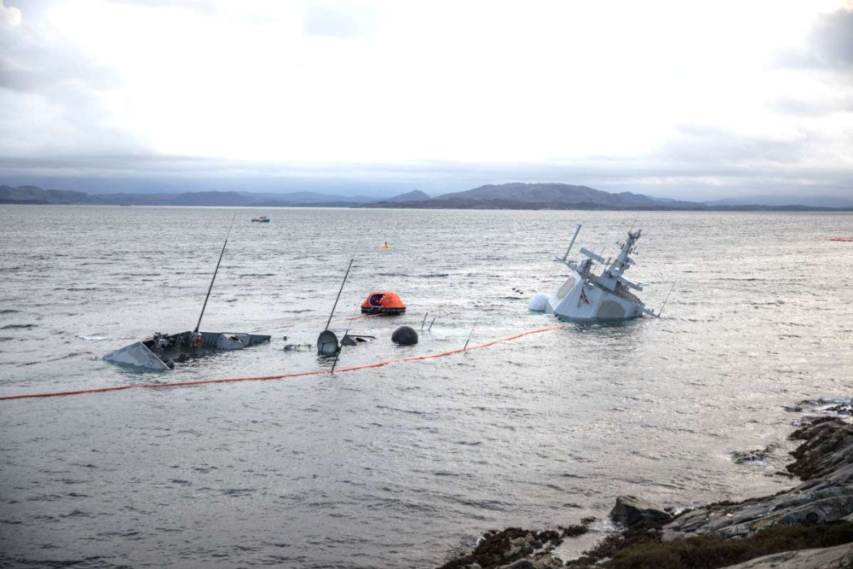The Accident Investigation Board of Norway (AIBN) and the Defense Accident Investigation Board of Norway (DAIBN) have made their initial joint report on the sinking of HNoMS Helge Ingstad available to the public:
“This report is a preliminary presentation of the AIBN’s investigations relating to the accident and does not provide a full picture,” the report warns up front. “The report may contain errors and inaccuracies.”
Based on what the investigators have determined so far, Helge Ingstad entered the fjord heading south and checked in with the Fedje Maritime Traffic Center, or Fedje VTS, at around 2:40 AM local time. Any ship over 80 feet long has to alert this control center before entering due to the narrow nature of the waterway.
The ship was traveling at approximately 20 miles per hour and had its navigation lights on. The ship’s Automatic Identification System (AIS) transponder was set to “receive only” mode, meaning that it was not transmitting its own position and other information to ships in the area.
At 3:40 AM, personnel on Helge Ingstad‘s bridge began to turn control of the ship over the next watch. At that time, the ship’s crew was aware of three northbound ships on its radar screen and had also visually observed “an object with many lights was observed lying still just outside the Sture terminal,” according to the report.
Sola did not leave the terminal until 3:45 AM. Less than 15 minutes later, the tanker’s crew radioed the Fedje VTS to inquire about a contract on their radar that was sailing with its AIS transponder apparently off.
At 4:00 AM, Fedje VTS identified the ship in question as probably Helge Ingstad and the tanker and the frigate began communicating directly. Approximately one minute later, the two ships collided.
[…]
A final report on the incident should contain more thorough explanations of exactly how the final moments of the collision played out and recommendations for the Norwegian Navy to try and prevent these sorts of accidents in the future. “So far, the AIBN has not seen any indication of technical systems not working as intended up until the time of the collision,” the report notes.
Separate from its findings regarding the events leading to the collision, the AIBN has also uncovered a serious technical issue that could have impacts well beyond this particular accident. Norwegian officials have alerted both the country’s navy and Spanish shipbuilder Navantia, which built the Helge Ingstad and Norway’s four other Fridtjof Nansen-class frigates, with concerns they have about the basic “watertight integrity” of the ships.
“The AIBN has found safety critical issues relating to the vessel’s watertight compartments,” an annex to the main report explains. “This must be assumed to also apply to the other four Nansen-class frigates. It cannot be excluded that the same applies to vessels of a similar design delivered by Navantia, or that the design concept continues to be used for similar vessel models.”
Update, 24 June 2019: The Norwegian government has decided to scrap the ship rather than undertake repairs.
To no one's surprise, #Norway has officially decided to scrap the #frigate #HELGEINGSTAD F313 rather than repair her. Repairs would cost a bit more than building a new ship. The govt wants to replace the lost capability but has yet to decide how. https://t.co/eslMmkQ6Jj pic.twitter.com/o0YB2R4zrY
— Chris Cavas (@CavasShips) June 23, 2019




